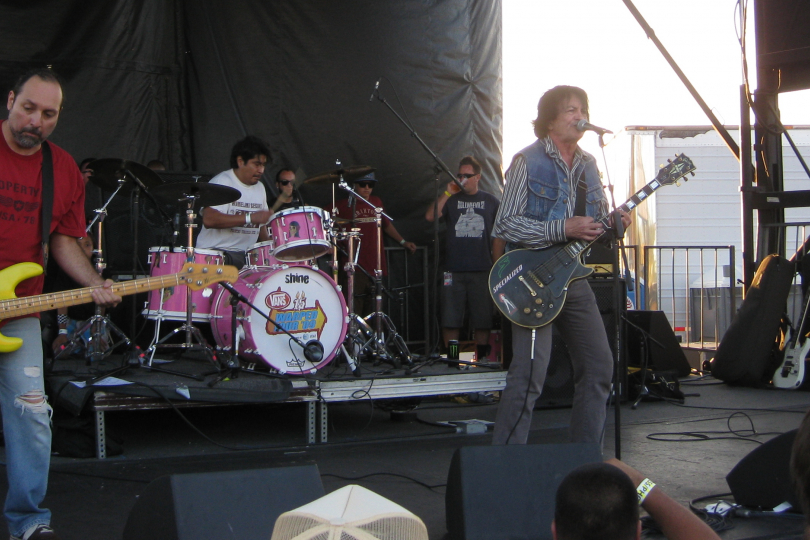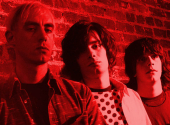
Milestones in Music History #5: Studs on TV FEAR and the Infamous Halloween Saturday Night Live Performance
Noise Music; Barret; Suicide; Velvet Underground; Desert Rock; the history of music is a perilous and yet appeasing path to walk. It has been, since the very origin of times, this powerful gift, and music is possibly the most evolving and sophisticated form of art, which affected culture, lifestyle, society, the history itself. Here the purpose is to delight you with some of the pivotal moments in music, some acts, facts, and records which delineated and shaped the music for the years to come (actually as far as this series could go on). I have selected a few, based on my personal path through music culture, and because I firmly believe these moments radically changed everything. Today we embark on a journey that will lead us to discover the most irreverent and tumultuous side of the history of music, through a band that has literally shattered the convictions of society, highlighting its flaws. Today I would like to tell you a story about a band which does not deserve a place in the history for their discography or awards, but who has revolutionized the music history on stage, on TV: today we talk about FEAR.
Many of you will remember 1977 as the year of punk. This year, exactly on the 3rd of April, Sid Vicious debuted with Sex Pistols at the Screen on the Green in London. Also, at the end of the same year, they released their first record, titled Never Mind the Bollocks, Here's the Sex Pistols, which caused a huge sensation, but was also a huge success. The record was preceded by the publication of the single "God Save the Queen", which was performed by the band on a boat on the River Thames during the Queen’s Jubilee, but the performance was immediately interrupted by the police, and the song banned by BBC. Another new punk band, called The Clash, released in March of ’77 their first recording, White Riot. In August Iggy Pop published his second and fundamental record, with punk-rock influences, in collaboration with David Bowie, Lust for Life.
It was a very special and intense year. Most of you probably don’t know, though, that in this same year another band was born, and destined to conquer and (eventually) destroy. Fear (stylized as FEAR) was formed in Los Angeles by Lee Ving (singer and guitarist) and Derf Scratch (bassist), who later recruited guitarist Burt Good and Johnny Backbeat at the drums. In 1978, Fear released the single "I Love Livin' in the City". Right after the release, though, Burt and Johnny left the band, replaced by Philo Cramer and Spit Stix.
A good opportunity was offered to them some years later, in 1980, when the film director Penelope Spheeris, who at that time was collecting footage of the Los Angeles punk rock scene, asked Lee Ving and Spit Stix whether they wanted to be part of her documentary, The Decline of Western Civilization (in three parts, although only the first one explores specifically the genesis of the punk phenomenon).
The film is an irreverent and truthful mirror of the underground music scene in LA at the time, which was basically unknown or ignored until that moment. The director conducts interviews with the artists and shows them immersed in real-life situations. It is a picture of the genuine and unfiltered roots of punk, through accounts and performances of the most representatives of the genre (apart from FEAR, we also see Germs, Black Flag, X, Circle Jerks, Catholic Discipline, Alice Bag Band).
In the documentary, one can immediately catch the spirit and the vibes running during their performances: more than a concert, it looks like a continuous confrontation between band and audience, at times very fierce, accompanied by insults hinting at sexism, misanthropy, homophobia. Lee Ving baits the crowd, provoking their inner souls ("Next time, don't bite so hard when I come, okay? You only spit as good as you suck, shithead!"). The crowd, in response, spits over the band and assaults them, trying to get on stage and punch them.
The film gave FEAR the possibility of getting out of the underground for a moment. John Belushi, after the presentation of the documentary, showed interest in the band and wanted to have them in the soundtrack of the movie he was preparing at the time, Neighbors. Unfortunately, he was the only one: the film crew in fact refused to include them in the project, so Belushi in response offered them to participate in a very popular TV program filmed in New York, Saturday Night Live (SNL), on the occasion of the Halloween special.
And that was a tremendous mess.
SNL was born in New York just a couple of years before, in 1975, with the name NBC's Saturday Night. The show featured the presentation of comic and parodic sketches, and interviews with special guests; in particular, in the first edition, prominent artists were, among others, Dan Aykroyd, Jane Curtin, Garrett Morris, Bill Murray—and of course John Belushi. Belushi insisted on inviting FEAR to perform, as compensation for non-participating in the soundtrack of his movie, and he invited a very special audience: in fact, it consisted of authentic punks, who, at the shout of Lee Ving “1-2-3-4-1-2-3-4!” created a brutal mosh pit, pogoing and slam-dancing.
Lee loses the microphone just a few seconds later, the crowd invades the stage. It is magnificent chaos, which lasts almost for two whole songs (“Beef Baloney” and “New York’s Alright if You Like Saxophones”). Towards the end of the second song, which already has striking lyrics (“New York's alright if you wanna get pushed in front of the subway/ New York's alright if you like tuberculosis/ New York's alright if you like art and jazz/ New York's alright if you're a homosexual/ New York's alright, New York's alright/ New York's alright if you like saxophones”), somebody shouts “Fuck New York!” (in an interview released in 2004, Spit Stix also claimed that he had written “Fuck You” in Arabic on his t-shirt, and then he put the letter Q and then FA on his bass drum. “It's just one of the chants that I just made up: "Q-FA-Q-FA-Q-FA-Q.").
The screen fades to black, while we can hear the starting of the third song supposed to be played that night, “Let’s Have a War”. According to an article published right afterward in New York Post, the band and the audience caused damages estimated at 200.000 dollars. An NBC technician, witnessing the madness, stated that "This was a life-threatening situation. It's amazing no one was killed."
Even though the actual damage was finally assessed at around 20.000 dollars, the performance is and will remain "a heavy stone" thrown by the punk movement at the “beautiful people” and respect and conformity of modern society. Eventually, the band fell apart in the mid-80’, after releasing two records (The Record and More Beer) but some of the members participated in other music projects and had solo careers; lately, in 2000’, Lee Ving reconstituted the group, and in 2018 the band reunited with Cramer and Stix, the original members. They released a special stream-recorded version of “I Don’t Care About You” last year, during the pandemic.
FEAR is considered nowadays one of the most important seminal punk bands of the history of music, and pioneer of the hardcore punk genre. Their performance marked a turning point in the music, because finally the most secret and perverted urges of the human being came out, wildly, uncontrollably. Their TV SNL appearance reflected profoundly society’s problems and contradictions of the time, putting an emphasis on misery and ugliness.
The next episode will go to the core of punk music, to its primitive roots, through the innovative and desecrating music of Iggy Pop and The Stooges, and their most emblematic work, Funhouse.
In which respect does punk resemble rebellion? How much consistent provocation and irony should be in music, and is everything allowed in art? Leave us your opinion below in the comments!
If you have found an error or typo in the article, please let us know by e-mail info@insounder.org.


